Gold Medal Bodies – Prasara Yoga 2.1
$32.00
Product Include:[9 ebook – PDF, 68 M4V, 15 MP3]
File size:859.45 MB
Gold Medal Bodies – Prasara Yoga 2.1
**More information:
Sale Page
Archive Page
Get Gold Medal Bodies – Prasara Yoga 2.1 at Salaedu.com
Description
Who Says Yoga Has To Be Boring?
Forget Everything You Think You Know About Yoga – Prasara Is A Dynamic Method Of Practice That Will Help You Move Better And Feel Better While Learning Fun And Interesting Ways To Move Your Body.
OK, let’s be honest here — you’ve heard of yoga before, so it’s not as if you’re coming to this page expecting to have your mind blown. You’ve probably seen some pictures of dudes in purple leotards and noticed those $12 DVDs at Wal-Mart. You’re not reading this page without some pre-existing idea of what yoga is.
Please don’t judge us based on what you’ve seen in the past.
Prasara Is Different. Really.
First, we should let you know that we have nothing but respect for traditional yoga styles. We’ve practiced a variety of them over the years, and you can get a lot out of that kind of practice.
It’s a well-established fact that practicing Yoga will help you increase flexibility and learn to relax, and various studies have shown it to correlate to just about any marker of good health you can think of. You know all this already, so we’re not going to go on about why you should practice yoga. However, we do want to tell you about what makes Prasara unique and what it can do for you.
The short story is that Prasara was created to develop Flow. We’ll talk more about this later, but the gist is that Flow is a quality of movement in which you can transition smoothly form one thing to another.
Flow is also a mental state sometimes referred to by athletes as “being in the zone.”Actually, Flow is a lot of things, and that can make it difficult to describe — and even harder to learn. But it isn’t impossible, and we’ve been teaching it for years to our private clients, in live seminars and workshops, and though this course, the Prasara Primer.
The unique element of Prasara practice as opposed to most other styles of yoga is simply that traditional yoga is fixated on sitting in poses while Prasara shifts the emphasis to the transitions between poses. You’ll still use the same postures and positions, but we’ll also work on your ability to “flow” from one to the next so you can develop real agility, grace, power, and yes, Flow in everything you do.
Within your first month using the Prasara Primer, you’ll:Restore your self-confidence as you master increasingly challenging movements.
Challenge your nervous system for increased movement efficiency.
Boost power and mobility simultaneously.
Play better at any sport with increased balance and spatial awareness.
Neutralize pain from tight muscles and stiff joints.
Minimize sidelining injuries and correct the imbalances that cause them.
Develop true functional muscle without excess bulk.
Tap into the unlimited creativity and spontaneity inside you.
Practice anytime, anywhere – with no equipment and minimal space.
After you’ve used Prasara for two months, you’ll wonder at how much better you feel in your body and your overall physical prowess and agility. Guaranteed.
I have practiced yoga for the last 18 years and seen a variety of different teaching styles. Some styles of yoga exist in an almost mystical shroud: exclusive cliques practicing a difficult series of movements. Other styles prescribe a rigid, unchangeable series of postures. The wonderful thing about Prasara yoga is the intuitive, open manner in which it can be practiced.
The Prasara Primer is an excellent starting point. The material is phenomenally user-friendly, and the clear, open tone of the Primer will enable anybody at any fitness level to get started immediately on a lifelong Prasara practice.
JB — Nashville, TNIs Prasara Really The Best style Of Yoga?We’re not going to tell you that Prasara is better than any other kind of yoga. That would be silly.
There’s no such thing as a “best” way to move your body. There are wrong ways — injurious ways, like those awful stretches your high school gym coach used to make you do — but the beauty of yoga is that most of the poses are very difficult to do in a way that could cause you to hurt yourself.
Yoga is gentle (not to be confused with passive), and Prasara especially emphasizes moving smoothly from one position to another, so you don’t have any jarring or wrenching effects that could pull a muscle.
But, though we won’t claim it’s the “best,” we will tell you that Prasara is the most fun style of yoga around.
While many styles of yoga insist on following a set sequence of however many poses for however many minutes, the ultimate goal of practicing Prasara is to teach you to flow without thinking of what comes next. Yes, in the beginning, you’ll be practicing routines (this course includes six of them — more about those later), but through practicing the routines, you’ll actually be giving your body the vocabulary of movement you need in order to improvise your own movements.
That last bit is the real magic of Prasara and what makes it such a natural fit for athletes.
The Prasara Yoga / Martial Arts ConnectionIt’s no secret that fighters are some of the most versatile and adaptable athletes around. You kind of have to be if you’re job requires you to perform while simultaneously trying to avoid getting socked in the face.
But what a lot of people don’t know is that martial arts and yoga have an awful lot in common.
We’re martial artists. Between the three of us, we’ve trained in a dozen different styles and competed on four continents. We wouldn’t waste our time training anything that didn’t allow us to deliver powerful strikes and kicks with speed and precision.
In the ring, nothing is predictable. It looks like chaos out there, but the fighters have to adapt with agility and grace (the best fighters are always graceful). It might surprise you to learn that the key to developing speed, power, and precision under pressure comes from practicing pre-determined routines over and over.
In traditional martial arts, they’re called kata, but many modern arts also make heavy use of “flow drills” in which partners rehearse preset attack and defense patterns to master various skills. As they get better and more efficient, the drill is altered to become just a little more difficult. With enough practice, advanced moves happen without any thought — like second nature — and that’s how fighters prepare every technique they plan to use in a match.
We do the same thing with Prasara.
In the beginning, we’ll show you a short sequence of movements. After some practice, we’ll add more. Eventually, it will start to get easier, and you’ll notice that your body sails through the transitions more efficiently, with no wasted movements.
That’s when we level up. Change the drill.
Each of the five core Primer flow routines have three levels of difficulty so you can step up gradually from the most basic variations of each movement to advanced forms that you wouldn’t have even attempted in the beginning.
Since you’ll always be able to choose the appropriate level of practice for any flow, you’ll never have to worry about a movement being too hard or advanced for you. Just practice the level that fits, and over time, you’ll find that you can move on to the higher levels of each movement.
Going with the Flow – On the Field and OffThough it’s perfect for martial artists, you don’t have to be a fighter to benefit from practicing Prasara. Prasara is possibly the most athletic style of yoga out there because of its dynamic movements and focus on Flow.
If you’re an athlete in any sport, you already know what Flow is. Your focus tightens, and the outside world fades away. You breathe deeper. Time slows down. You get tunnel vision, and the path between you and your goal opens up. You don’t have to think about what to do — you just act, spontaneously, in the moment.
Even if you’re not an athlete, you’ve probably experienced flow while driving on the highway, playing a musical instrument, or doing something else that requires a relaxed concentration.
Flow feels good, and when you’re in it, you don’t want it to end.Even if you’re not the “sporty” type, you know that one of the least useful things an athlete can do is to stand perfectly still during a match. In fact, that might just be the fastest way to lose in most sports.
No, athletes have to move. So it’s important that a yoga style designed to develop athletic movement not spend too much time sitting still.
That’s why Prasara is built on “the movement between the movements.” Feeling balanced and centered is easy when you sit perfectly still, but you can’t do that all the time. Your life demands that you get out and interact with challenges in the world. For most people, Flow is a fragile state that crumples when it comes in contact with the slightest change, but you can develop a stronger Flow by teaching your body how to transition through change.
To get better as adapting to the unexpected (like an opponent’s right hook — or another car suddenly changing lanes), you must practice changing — transitioning — from one movement (the one you planned) to a different one (that adapts to the changing environment).
If an athlete can’t access Flow, they can’t play their best. They make the wrong choices, their bodies will be a step behind their minds, and they’ll keep getting caught off-guard when things don’t go according to plan.
And that’s when injuries happen.
Prasara Is Like Injury Insurance For AthletesYou’ve probably seen videos of athletes getting injured. These videos are painful to watch — not only because we can see an injury occurring, but because we can see it coming before they do.
When athletes get surprised, they get hurt.
The ball travels in an unexpected direction. Another player attacks from an unexpected angle. They step on a slippery patch. They get faked out.
Things happen that we can’t predict or control.
Prasara yoga is like injury insurance for athletes because it trains you to always be ready to adapt to changes. If you can’t move the way you had planned, you simply transition to a different position. Flow to the next movement and keep going. Sidestep the other player. Jump to make the catch. Learning to adapt can help you stay in the moment — in Flow — so you don’t get caught off-guard.
And it’s the same thing off the court too.
Be More Confident With Everyday Movements
And don’t think this just applies to athletes — we all use our bodies for a variety of tasks every day, and it’s not uncommon to hear about people twisting an ankle stepping off a curb or pulling a back muscle while bending over to tie a show or pick up a dropped wallet.
What would it be like to know that your body was prepared to adapt to anything that comes up?
Flow isn’t just for sports — it means more confidence in every step. More power and assurance when you open a door and enter a room. More agility to navigate the unexpected challenges life throws at you every single day. And all of this translates to more effective and efficient movements that leave you with less stress, more energy, and a greater feeling of mastery in your environment.
Yoga For Your LifestyleAnd that’s the most important thing, after all: applying Prasara to YOUR life.
It’s great for us to talk about how we use Prasara, but it’s got to make sense to you if you’re going to practice it. You’ve got to know that Prasara will work for your situation and for your body. And it will, by the way. We’ve seen Prasara help people from all different backgrounds achieve a wide range of goals with this practice. It will help you too.
Whether you want to improve your athletic performance or just enjoy playing with your kids (or grandkids), Prasara practice will teach you to move with more control and ease. You’ll find greater mobility and confidence in everything you do with your body. And you’ll have fun.Of course, if you can’t make Prasara practice fit your lifestyle, it won’t help you.
Simply put, you’re going to have to practice if you want to see any benefits. So we’ve spent a lot of time designing the Primer to be easy to get started with and simple to follow from the beginning, whether you’ve practiced yoga or years or have no prior experience. The Primer is made to fit into your life now, no matter how busy you are or what other activities you have in your life. We’ll show you how to make Prasara work for you so you can get all the benefits of this practice.
You won’t have to devote a certain amount of time every day to practice. Though you’ll see faster results with more work, just a few minutes at a time is enough to get started, and you can literally do this anywhere, with no equipment or special clothing.
More Course: FITNESS – HEALTH – MEDICAL
Outstanding Course:The Complete Idiot’s Guide to Massage Illustrated DVD
1 review for Gold Medal Bodies – Prasara Yoga 2.1
Add a review Cancel reply
Related products
Health – Fitness – Medical
Health – Fitness – Medical
Dr. Stephen E. West – The Golden 7 Plus Two (The Art of Lymphasizing)
Health – Fitness – Medical
Health – Fitness – Medical
Health – Fitness – Medical

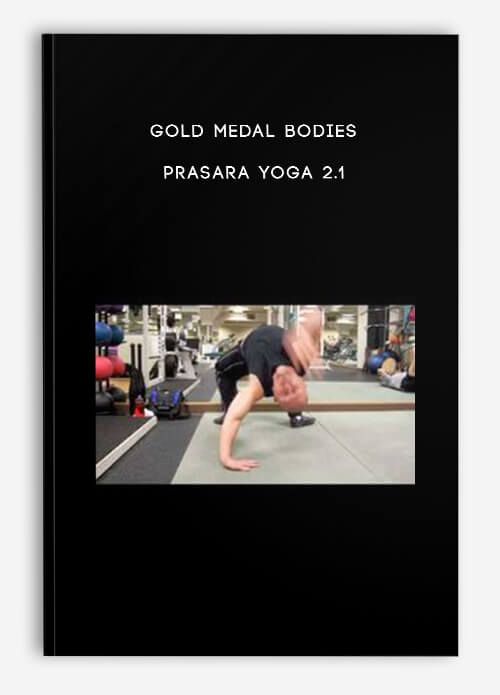
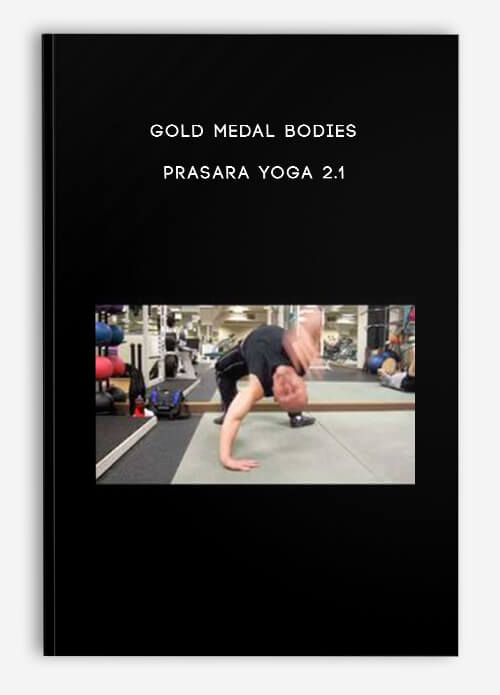
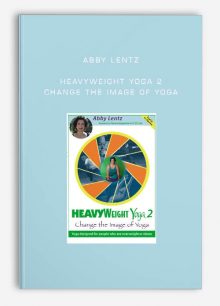
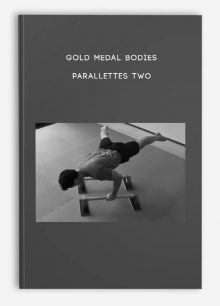



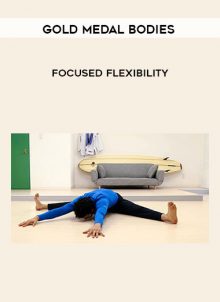
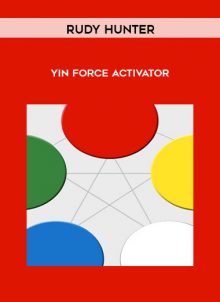
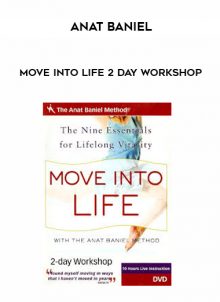
Trevis Trevis –
“We encourage customers to contact Customer Service and think twice before making payment. All course contents will be similar to what is from the author.”
Thank you!